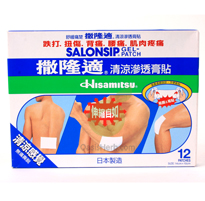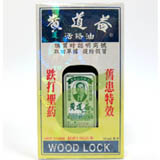 Glaucoma is the second largest cause of irreversible bilateral blindness globally. It is a disease of the optic nerve that causes a loss of vision, usually in both eyes.
Glaucoma is the second largest cause of irreversible bilateral blindness globally. It is a disease of the optic nerve that causes a loss of vision, usually in both eyes.
In the United States, it is estimated that more than 3 million people have glaucoma. However, almost half of these individuals with glaucoma have not been diagnosed. The primary reason is that glaucoma often begins with a subtle decrease in peripheral vision and this symptom is usually not noticeable.
Causes and treatments
Even though the exact pathophysiology of glaucoma is not known, elevated intraocular pressure (IOP) has been identified as the major risk factor in the progression of the disease. In fact, it is well proven that glaucomatous visual field loss was reduced when IOP was reduced and maintained at the normal level.
The main treatment options for glaucoma include topical ocular hypotensive therapy, filtration surgery or laser treatment. Topical ocular hypotensive therapy remains the initial-choice strategy for ophthalmologists to lower IOP and to preserve long-term visual function.
There are four different types of anti-glaucoma agents within the ocular hypotensives therapy (Table 1):
- Beta-blockers (Betoptic®, Betagan®, Ocupress®)
- Carbonic anhydrase inhibitors (Cozopt®, Azopt® and Trusopt®)
- Selective alpha2-adrenergic agonists (Alphagan®)
- Prostaglandin analogues (Xalantan®, Travatan®, Lumigan®, Rescula®)
These agents work either by decreasing aqueous humor production or by increasing aqueous humor outflow via interaction with receptors within the ciliary body.
| Tablet 1. Selected products comparison of the Glaucoma category | ||||||
| B-blockers | CAI | a2-adrrenergic | Xalantan | Travatan | Lumigan | |
| 1st/2nd | 2nd | 1st | 1st | 1st | 1st | |
| Efficacy | ++ | + | ++ | +++ | ++++ | ++++ |
| IOP reduction | 30-35% | 19-23% | 20-27% | 45% | 50% | 50% |
| Side-effectCardiopulmonaryConjunctival hyperemia | +++ | + | ++ | + | ++ | ++ |
| Dosage | BID | TID | TID | OD | OD | OD |
+++ – Strong
++ – Moderate
+ – Low
Beta Adrenergic Receptors Blockers
When the topical beta-blocker agent (timolol) was first introduced in 1970s, beta-blockers revolutionized the treatment of glaucoma. For the first time, a topical medication was available that was effective with significantly fewer visual side effects than its predecessors. After a single application, timolol maleate was able to reduce intraocular pressure within 1 hour and the peak pressure by as much as 30-35% compared to baseline.
Since then, beta-blockers have become the first line, and the most preferred anti-glaucoma agents. However, in the last decade, their popularity has declined as clinicians and investigators began to identify subtle systemic side effects, which might cause harm in certain groups of patients. In the past four years, the prescriptions for topical beta-blockers have fallen by 32%.
Some of the side effects that created concern among clinicians include exacerbation of asthma and chronic obstructive pulmonary disease, worsening of cardiac conditions in patients with heart failure and adversely affecting the plasma cholesterol levels in patients with coronary artery disease. As a result, patients with these diseases, especially the elderly, are usually prescribed newer classes of anti-glaucoma agents instead of the beta-blockers.
Besides the elderly populations with co-existing disease, beta-blockers may also have negative effects on younger patients. Due to their negative effect on cardiac output, heart rate and endurance, beta-blockers have been shown to reduce exercise tolerance in younger patients. These patients, especially athletes, are advised to stay away from the topical beta-blockers in order to prevent a decrement in their performance.
Although the selective beta-blockers, such as Betoptic®(betaxolol) are supposed to offer better safety profile than the non-selective ones, selective beta-blockers have the potential of causing similar side effects and should be used with caution. Furthermore, selective beta-blockers have been found to be less efficacious than non-selective b-blockers. While the non-selective b-blockers can lower the IOP by 4-6 mm Hg (2-35%), Betoptic® can lower IOP only by 3-4 mm Hg (15-25%). As a result, use of selective beta-blockers have also been limited.
Lastly, not all glaucoma patients respond to beta-blockers. A large clinical trials revealed that only around 30% of patients are effectively controlled with topical beta-blocker therapy. As a result, there was a need to search for anti-glaucoma agents with higher response rates and better safety profiles.
Given the long-term systemic side effect profile of this class of drug and the inconvenient twice-daily dosing schedule, use of beta-blockers will continue to decrease and will be replaced by the newer anti-glaucoma agents.
Topical Carbonic Anhydrase Inhibitors
The topical carbonic anhydrase inhibitors (CAI) are alternatives to the beta-blockers in treating glaucoma. They lower intraocular pressure by reducing aqueous humor formation. Currently, there are two CAI products available on the market: Trusopt® (dorzolamide) and Azopt® (brinzolamide). Merck & Co launched Trusopt® in 1994 while Alcon marketed Azopt® in 1998. Azopt® is given twice-a-day while Trusopt® is administrated three times a day.
When compared with beta-blockers, the topical carbonic anhydrase inhibitors are less effective in lowering IOP. Both Trusopt® and Azopt® reduce IOP by approximately 19-23%. Although slightly less effective, these agents have fewer systemic side effects and are better tolerated than the beta-blockers. The most common side effects associated with Trusopt® and Azopt® include bitter taste (27%), transient burning, blurred vision, and conjunctivitis.
Due to their moderate IOP-lowering capability and frequency of dosing, the topical carbonic anhydrase inhibitors are mostly used as adjunctive therapy or as second-line agents when patients could not tolerate the systemic side effects of topical beta-blockers.
In 1998, Merck& Co. launched a twice-daily dosed combination product, timolol and dorzolamide (Cosopt®), to fend off the attack by Azopt® and to extend its patent on Trusopt® (expiring in 2003). Although this new combination is more effective than the single entity-product, and offer better compliance by combining two products into one, experts are concerns that the amount of beta-blocker contained in Cosopt® is higher than what is needed by most patients.
Alpha2-Adrenergic Receptor Agonists
Before the introduction of the prostaglandin analogs, brimonidine (Alphagan®), a selective alpha2-adrenergic agonist, was the most widely used anti-glaucoma agent. Alphagan® has the efficacy of timolol, but without its undesirable cardiac and pulmonary side effects. By increasing both the uveoscleral outflow and by decreasing aqueous humor formation, Alphagan® is able to reduce IOP by approximately 20-27%.
Even though the number and severity of side effects experienced with Alphagan® is less than that with beta-blockers, a small percentage of patients might experience rebound hyperemia, conjunctival follicle formation and allergic reaction. In particular, it has been reported that in certain areas of the country, the incidence of topical allergy associated with Alphagan® was as high as 25%. Coupled with its thrice-daily dosing schedule and the launch of prostaglandin analogues, the use of Alphagan® has been decreasing in the past few years.
In order to revitalize this brand, Allergan, the makers of Alphagan®, introduced a new formulation of Alphagan® in 2001. With a new preservative (Purite), Allergan® claimed that the product, Alphagan®-P, would have lower incidence of allergic reactions.
Lastly, severe hypotension and other cardiovascular side effects have been reported in infants and toddlers using brimonidine. Therefore, until further information is available, brimonidine should be avoided in children less than 5 years of age.
Prostaglandin Analogues
Prostaglandin analogues are the latest and most potent anti-glaucoma agents available. Prostaglandins lower intraocular pressure by increasing the uveoscleral outflow of aqueous humor. There are currently five different prostaglandin-analogues on the market: latanaprost (Xalatan®), travaprost (Travatan®), bimatoprost (Lumigan®) and unoprostone (Rescula®).
The popularity of these agents as the first line-therapy for glaucoma patients comes from their (1) superior efficacy, (2) convenient once-daily dosing schedule and (3) good safety profile.
Unlike any other anti-glaucoma agents, prostaglandin analogues are able to lower IOP by up to 50%, or 6-8 mm Hg on average. In fact, several clinical trials have demonstrated the superior efficacy of prostaglandins in lowering IOP. Also, a higher percentage of patients treated with prostaglandins reach target pressures goals than others who use other classes of anti-glaucoma agents.
Besides offering effective IOP lowering, prostaglandin analogues are also the only class of anti-glaucoma agents that could be administrated once daily to control IOP. In contrast, carbonic anhydrase inhibitors require three times daily administration, while beta-blockers needed to be administrated two times a day.
Lastly, prostaglandin analogues cause no cardiovascular or pulmonary side effects. With all these benefits, it is no wonder that fewer patients on prostaglandin analogues withdrew from their medications compared with other anti-glaucoma therapies.
The only concern associated with the use of these agents is the increase in iris and periorbital pigmentation. Post-marketing experience has indicated that approximately 30% of patients taking prostaglandin undergo increased iris pigmentation. Nevertheless, since this side effect is not associated with any cellular proliferations or other dangerous consequences, it has not been a major concern among ophthalmologists who believe the benefit of using these agents outweigh the risk involved (prevent blindness vs. darker color of the iris and eyelid).
Xalatan®
Launched in 1996 by Pharmacia, Xalatanâ is the first prostaglandin analogue approved by the FDA for reducing IOP in glaucoma patients. It is also the prostaglandin analogue with the best tolerability profile.
In 2002, Xalatan® is the most prescribed prostaglandin analogue. It is believed that the rapid growth of Travatan® and Lumigan® are related to the superior efficacy of these products. Even though Xalatan® is more potent than the beta-blockers in lowering IOP, the efficacy of Travatan® and Lumigan® are even stronger. Furthermore, the use of Xalatan® is limited by the need to refrigerate, which is not a requirement for its competitors.
The only advantage that Xalantan® has over Travatan® and Lumigan® is its lesser likelihood of causing conjunctival hyperemia and eyelash growth. However, these side effects are usually mild and transient. As a result, we believe Xalatan® will continue to lose its usage share as more and more patients switch from Xalatan® to Travatan® and Lumigan®. There are no clinical studies conducted comparing the IOP lowering efficacy of Lumigan® and Travatan®.
Combination Products
Currently, there is only one combination product available on the market: Cosopt® – timolol and dorsolamide. In 2002, however, Pharmacia filed a new drug application for its own combination product, Xalcom® (latanoprost and timolol).
Even though it has not been launched, the anticipated reception of Xalcom® among current opinion leaders have been mixed. While some doctors believe the new product could allow more aggressive treatment of glaucoma (13.9% IOP reduction for Xalcom®, 9.2% IOP reduction for Xalatan® and 1.3% reduction for timolol) with improved compliance, others are concerned that the combination product might only increase the chance of overdosing one ingredient in order to maintain adequate therapeutic levels for the other.
Please visit healthreason.com for more health related articles.






1 Response to Glaucoma – Causes, Symptoms, Diagnosis, Prognosis and Latest Treatment